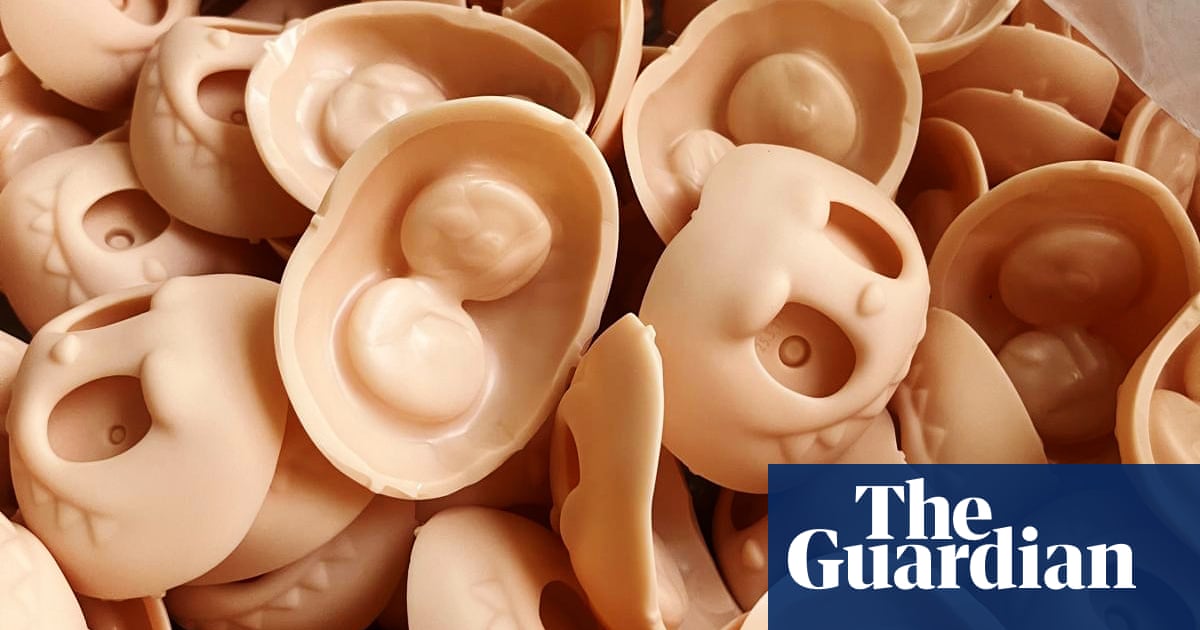- Thailand and Cambodia agree to ceasefire Politico
- Cambodia and Thailand agree to ‘immediate and unconditional ceasefire’ BBC
- Thai army accuses Cambodia of ceasefire violations Al Jazeera
- Thailand and Cambodia agree to ‘immediate and unconditional’ ceasefire The Guardian
- Thailand and Cambodia agree truce after 5 days of fighting Dawn
Blog
-
Thailand and Cambodia agree to ceasefire – Politico
-

ITTF Completes Successful Site Inspection for Dakar 2026 Youth Olympic Games
ITTF has concluded a productive site visit to Dakar, Senegal, confirming excellent preparations for the table tennis competition at the 2026 Youth Olympic Games. The inspection, led by Mohamed Eldawlatly, ITTF Head of Events, reinforced confidence in what promises to be an outstanding tournament.
The table tennis competition will take place from 31 October to 5 November 2026 at the Dakar Expo Centre, positioned just 10 minutes from the Youth Olympic Village. This proximity provides a significant advantage for athletes, minimising travel time and maximising rest and preparation opportunities.
The short distance allows athletes to return to the village between sessions and maintain their regular routines—crucial factors for young competitors experiencing their first major international tournament.
ITTF is fully committed to the success of the first Olympic event on the African continent and will provide comprehensive technical support for the Dakar 2026 table tennis competition. A dedicated Technical Competition Team, comprising an ITTF Technical Delegate and Competition Manager from the federation’s professional staff, will ensure the highest standards of event management.
This support extends beyond competition operations, with ITTF Development activities playing a crucial role in the athletes’ qualification process. This is particularly significant for African players, many of whom are progressing through development programmes currently taking place across the continent, including talent identification events like the ongoing Africa Hopes Week & Challenge in Lagos.
The inspection team worked closely with organisers to maximise spectator capacity and enhance athlete facilities. Plans are advancing to optimise seating configurations whilst ensuring excellent viewing conditions and broadcast quality.
The venue’s flexibility allows for reconfiguration between competition phases, accommodating maximum participation in early rounds while creating intimate, arena-style environments for medal matches.
Special attention is being given to spectator experience, with plans to incorporate Senegalese cultural elements into competition presentation. Many spectators will be experiencing high-level table tennis for the first time, creating opportunities for innovative fan engagement.
The Youth Olympic Games’ emphasis on education and inspiration provides scope for creative presentation that honours both local traditions and Olympic values.
African Development Milestone
Dakar 2026 also represents a significant milestone for African table tennis development. Young players across the continent now have the inspiring prospect of competing in a Youth Olympic Games on home soil.
ITTF’s expanding development work across Africa creates clear pathways for emerging talents, with current Hopes programme participants potentially progressing to compete in Dakar. The timing aligns perfectly with the federation’s continental development strategy.
ITTF’s support for Dakar 2026 encompasses athlete development, technical expertise, and promoting table tennis growth across Africa and the global youth sports community. As the continent strengthens its table tennis infrastructure through expanding development programmes, the timing is ideal for this landmark event.
Preparations will now focus on finalising venue enhancements and operational procedures, ensuring the world’s best young table tennis players find a competition environment worthy of their talents when they arrive in Dakar.
The countdown to what promises to be a memorable tournament has begun.
Continue Reading
-

David Harbour’s ex Lily Allen claims she was emotionally abused by former partner
British singer Lily Allen has revealed that a former partner used repeated hygiene-related insults as a form of emotional abuse.
Speaking on the July 2025 episode of her Miss Me? podcast with Miquita Oliver, Allen said the behavior made her feel “self-conscious” and was a clear tactic to assert control.
In response to a listener question, Allen recalled, “An ex used to constantly say I smelled bad, and when I asked other people if it was true, they said no. I think it was a form of bullying.”
She continued, “It was done on purpose to make me feel s— about myself and to make them feel powerful.”
Allen, who recently confirmed her separation from Stranger Things actor David Harbour, did not clarify whether the comments were made by him or another past partner. However, the timing of the podcast remarks has sparked speculation among fans online.
The singer also described the ex as hypocritical: “When I first met them, there were actual skid marks on their bed,” she said. “They had the audacity to tell me to brush my teeth—no, honey!”
Podcast co-host Miquita Oliver called the behavior “a horrible form of abuse,” and emphasized how such remarks can be used to manipulate and diminish someone’s self-worth.
Allen has frequently used her platform to speak on mental health, relationships, and identity, drawing on personal experiences. The Miss Me? podcast, produced by BBC Sounds, has grown in popularity for its candid discussions and emotional honesty.
The singer has not publicly named the partner referenced, and David Harbour has not responded to the episode.
Continue Reading
-

James Cameron Teases Expanding ‘Avatar’ Into Animated Anthology Series
The world of the Na’vi might be expanding into the small screen, per director James Cameron, who recently opened up about his plans to take the franchise to animated territory, with an anthology series and possibly a feature.
Speaking to Empire ahead of the Dec. 19 release of the much-anticipated Avatar: Fire and Ash, the three-time Oscar winner discussed how Avatar — already expanded into video games and a theme park at Walt Disney World — could explore further backstory, an idea he’s already broached with Disney.
“I said, ‘Look, I want to do an animated anthology series that’s essentially in the world, but stories that you wouldn’t have expected from that world,’” the Titanic helmer explained. “There might even be an animated feature in there — it might be a feature for streaming, or a theatrical feature.”
Cameron cited other examples of animated adaptations that drew from existing films, such as The Matrix: “A good early example is The Animatrix, where they went afield in the Matrix world. These are all great examples for how we can add texture and baroque detail to the world of Avatar.” As such, these projects could offer “backstory on characters and tangential stuff that happened off-camera within the movies. Who first landed on Pandora? The first expedition. You could go anywhere you want.”
However, considering the followup to 2022’s gargantuan The Way of Water has been taking up a significant chunk of the filmmaker’s time, Cameron said the animated entries are still in early stages of development.
“We haven’t done much with that yet,” he said. “We’re still gathering our stories and that sort of thing, and I’ve got to find the boutique filmmakers, the animators, that want to do it.”
A first trailer for Fire and Ash dropped last week, after debuting on silver screens ahead of The Fantastic Four: First Steps. Combined, the Avatar movies have grossed $5.24 billion, with the first 2009 entry remaining the highest-grossing movie ever with $2.92 billion.
Continue Reading
-

Asian shares mostly slip as focus shifts to US talks with China
TOKYO (AP) — Asian shares mostly declined Tuesday as some of the euphoria fizzled out over a tariff deal with Japan as proposed by President Donald Trump, which was followed by a similar deal with the European Union.
Japan’s benchmark Nikkei 225 slipped nearly 0.7% to 40,725.23. Australia’s S&P/ASX 200 lost 0.3% to 8,670.50. South Korea’s Kospi was little changed after reversing earlier losses, edging less than 0.1% higher to 3,212.59.
Hong Kong’s Hang Seng dropped 1.1% to 25,276.36, while the Shanghai Composite shed 0.3% to 3,586.93.
Analysts said markets were watching for the latest from Trump, which are now focused on the talks with China. U.S. Treasury Secretary Scott Bessent and Chinese Vice Premier He Lifeng were meeting in Sweden. Bessent has said the negotiations will likely lead to an extension of current tariff levels. There was no significant new information after the first day of talks.
“Aside from addressing economic imbalances, tariffs are also now well entrenched in the geo-political arena,” Tan Boon Heng of the Asia & Oceania Treasury Department at Mizuho Bank said in a commentary.
Last week, Trump announced a trade framework, placing a 15% tax on goods imported from Japan, a level far lower than the earlier 25% rate that the president had indicated. Trump also said Japan would invest $550 billion into the U.S. and open up to U.S. autos and rice. Details are still unclear, but the accord set off some momentary relief.
U.S. stock indexes drifted through a quiet Monday after the United States agreed to tax cars and other products coming from the European Union at a 15% rate, lower than Trump had threatened.
Many details of the trade deal are still to be worked out, and Wall Street is heading into a week full of potential flashpoints that could shake markets, including an interest rate decision Wednesday by the Federal Reserve.
The widespread expectation on Wall Street is that Fed officials will wait until September to resume cutting interest rates, though a couple of Trump’s appointees could dissent in the vote. The Fed has been on hold with interest rates this year since cutting them several times at the end of 2024.
On Wall Street, the S&P 500 was nearly flat, edging up by less than 0.1% to 6,389.77 and setting an all-time high for a sixth straight day. The Dow Jones Industrial Average dipped 0.1% to 44,837.56, while the Nasdaq composite added 0.3% to its own record, closing at 21,178.58.
Tesla rose 3% after its CEO, Elon Musk, said it had signed a deal with Samsung Electronics that could be worth more than $16.5 billion to provide computer chips for the electric-vehicle company. Samsung’s stock in South Korea jumped 6.8%.
Continue Reading
-

Moderate coffee and tea habits linked to sharper thinking in seniors
Could your daily coffee or tea habit help keep your mind sharp as you age? New research links moderate consumption to slower declines in reasoning and memory among seniors.
Study: Moderate coffee and tea consumption is associated with slower cognitive decline. Image Credit: Ljupco Smokovski / Shutterstock
In a recent article published in the Journal of Alzheimer’s Disease, researchers investigated the association between different levels of tea and coffee consumption and long-term changes in cognitive performance among older adults. Their results indicated that moderate coffee intake, as well as moderate to high tea intake, may be linked to slower cognitive decline, and that moderate coffee intake may be more beneficial than high intake.
Background
Cognitive decline, especially due to Alzheimer’s disease, is a major public health issue in aging populations. Identifying modifiable lifestyle factors that help preserve cognitive function is, therefore, critical. Coffee and tea, both widely consumed beverages, contain compounds such as caffeine, flavonoids, and other polyphenols that may promote brain health through anti-inflammatory and antioxidant mechanisms. The paper notes that coffee also contains chlorogenic acids, while tea contains theanine and specific flavonoids, such as catechins.
Prior meta-analyses have suggested mixed but promising results. One study found that consuming up to 2.5 cups of coffee per day was linked to a lower risk of cognitive disorders, while for tea, a linear relationship was observed, where each additional daily cup was associated with an 11% reduction in risk.
Another meta-analysis suggested that low intake of coffee and green tea was protective against cognitive decline and dementia. However, human studies on this topic have shown inconsistent results, possibly due to differences in study design, confounding variables, and unclear dose-response relationships.
About the Study
In this study, researchers analyzed data from 8,715 participants in the UK aged 60–85 years who were dementia-free at baseline and followed over an average of 9.11 years. Participants were excluded if they had medical conditions or were on medications that could affect cognitive health, such as Parkinson’s, depression, diabetes, hypertension, or were consuming more than 14 units of alcohol per week.
Coffee and tea intake over the previous year was self-reported and categorized into three groups: never, moderate intake (between one and three cups per day), or high intake (more than four cups per day). Cognitive function was assessed using computerized tests measuring fluid intelligence (the ability to solve verbal and numeric reasoning problems), reaction time, numeric memory, and pair-matching errors (a test of visual memory).
Demographic and genetic data, including socioeconomic status, body mass index (BMI), ethnicity, education, age, sex, and Apolipoprotein E genotype, were recorded and controlled for in the analysis. Cognitive changes were assessed using linear mixed models, including time as an interaction variable. Data were adjusted for key covariates and corrected for multiple comparisons using the false discovery rate (FDR). Skewed cognitive variables were transformed for normality.
Participants were required to undergo at least two cognitive assessments during the study period. By excluding reports of extreme beverage consumption and controlling for confounders, the study aimed to isolate the effects of moderate and high coffee and tea intake on cognitive aging.
Key Findings
The study found that daily coffee and tea intake predicted changes in cognitive performance over time, particularly in fluid intelligence. Participants who reported never drinking coffee or moderate coffee consumption experienced a slower decline in fluid intelligence compared to those with high coffee intake. These groups also exhibited a smaller increase in pair-matching errors, indicating better preservation of visual memory over time. However, no significant associations were observed between coffee intake and reaction time or numeric memory.
For tea, both moderate and high intake were linked to a slower decline in fluid intelligence compared to those who never consumed tea. These associations remained statistically significant after correcting for multiple comparisons. However, at baseline, those who drank tea performed slightly worse on the fluid intelligence task. Tea intake was not associated with changes in reaction time, pair-matching errors, or numerical memory across the follow-up period.
Overall, moderate coffee and tea intake appeared to protect against certain forms of cognitive decline in older adults, particularly in reasoning and problem-solving abilities. In contrast, high coffee consumption (four or more cups daily) was associated with a faster decline.
Conclusions
This study showed that moderate coffee and both moderate and high tea intake were associated with slower declines in fluid intelligence over nearly a decade, suggesting potential cognitive benefits in older age. While the protective effects were more apparent for tea and moderate coffee intake, high coffee consumption (four or more cups per day) was linked to poorer outcomes.
These findings align with some prior research but contrast with studies using global cognitive measures or shorter assessments.
Strengths include the large, well-characterized sample and long follow-up duration. However, limitations include self-reported beverage intake (subject to recall bias), lack of data on mid-life consumption or coffee preparation methods (such as decaffeinated vs. caffeinated, brewing method, or the addition of milk and sugar), or the specific types of tea consumed (e.g., black, green, or white).
Additionally, potential confounding factors, such as stress or sleep disruption, may not have been fully accounted for.
Despite these limitations, the results suggest that moderate consumption of coffee and tea may be protective against age-related cognitive decline. The researchers speculate that caffeine may be a key factor, noting that tea’s lower caffeine content could explain why no upper limit for beneficial tea consumption was observed in this study. Further randomized controlled trials are needed to confirm causal relationships and inform guidelines.
Journal reference:
- Rainey-Smith, S. R., Sewell, K. R., Brown, B. M., Sohrabi, H. R., Martins, R. N., & Gardener, S. L. (2025). Moderate coffee and tea consumption is associated with slower cognitive decline. Journal of Alzheimer’s Disease. DOI: 10.1177/13872877251361058, https://journals.sagepub.com/doi/10.1177/13872877251361058
Continue Reading
-

Bengaluru techie was mocked by interviewer: ‘People like you won’t make it to Google.’ Her clapback has the internet’s attention
A Bengaluru-based techie’s job interview experience is striking a chord across the internet — and not just because of where she ended up. Arpita Das, a Software Engineer currently working at Google, took to X to share a bitter but ultimately satisfying story from her job hunt. In her post, she recalled being grilled by an interviewer from a mid-level startup during a system design round. He pushed her to estimate everything from CPU costs to infrastructure planning — practically everything except, as she joked, physically building the data centre.But what really stuck with her was what happened when she stumbled. According to Arpita, the interviewer smirked and said, “This is why people like you won’t make it to big companies like Google or Meta.” That sting didn’t last long, though — today, she works at Google.
“I’m not bragging,” she wrote. “Just wondering why some folks gatekeep based on their own insecurities.” The post quickly gained traction, with people rallying behind her. One user cheekily asked where the interviewer works now. Arpita’s reply? He’s still at the same company.
Internet reacts
Others jumped in to share similar experiences and show support for Arpita. One user called her journey the best form of revenge, encouraging her to keep going strong. Another pointed out that when they conduct interviews, they focus on what they can learn from the other person, rather than trying to break them down. One particularly striking response came from someone who had also faced gender bias in the hiring process. She shared how a former interviewer doubted her ability to handle onsite work simply because she was a woman. Ironically, that interviewer was fired within a year and a half, while she went on to perform not just her own responsibilities, but his as well — and did a better job at it.
Arpita’s story isn’t just a personal win — it’s a reminder of how far kindness and humility can go in an industry where gatekeeping and egos still often get in the way.
As per her X bio and LinkedIn, she is a graduate from VIT, with a B.Tech in Computer Science. She joined Google just a couple of weeks back and shared a note on LinkedIn. Arpita Das shared that she has joined Google as an SDE II, where she’s working on Gemini at Google DeepMind. She called it an incredible opportunity and is excited to be part of a team pushing the boundaries of AI, she said she’s grateful to be learning from some of the best minds in the field.
Continue Reading
-

Setting Care Goals Early Is Key in Pulmonary Fibrosis
Acute exacerbations of idiopathic pulmonary fibrosis (AE-IPF) and progressive pulmonary fibrosis (AE-PPF) continue to present complex challenges in intensive care settings, say researchers of a new paper, underscoring the high mortality associated with these events and the importance of early decision-making conversations and intervention strategies.1
IPF and PPF both face poor survival rates, and the pair share similar clinical features, leading to similar treatment approaches, which are limited and nuanced. | Image credit: Sebra – stock.adobe.com
Recent estimates suggest that AEs occur in up to 10% of patients with IPF and PPF annually. These episodes, marked by sudden respiratory decompensation and radiologic evidence of new ground-glass opacities on a background of usual interstitial pneumonia (UIP), are associated with dismal outcomes: in-hospital mortality reaches 50%, and rates approach 90% among those requiring mechanical ventilation.
IPF and PPF both face poor survival rates, and the pair share similar clinical features, leading to similar treatment approaches, which are limited and nuanced.
“Treatment options remain limited, often necessitating consideration for lung transplantation. Careful deliberation is required when deciding on intubation, and early integration of palliative care is strongly recommended from diagnosis through the disease course,” explained the researchers in Critical Care Nursing Clinics of North America.
Corticosteroids remain a cornerstone of AE-IPF and AE-PPF treatment following diagnosis, though their use is increasingly scrutinized based on questions surrounding their effectiveness and potential harm. While high-dose steroids may show some benefit in PPF flares, studies have failed to demonstrate survival benefit in AE-IPF, and concerns remain over immunosuppression risks. Retrospective studies comparing pulse-dose regimens (>250 mg/day of methylprednisolone) versus non-pulse doses (1 mg/kg/day) showed no significant outcome differences, also raising questions about optimal dosing strategies.
When patients get admitted to the intensive care unit for flares, delivery of oxygen varies based on specific needs of the patient. Options include high-flow nasal cannula (HFNC), preferred for its ability to provide enough oxygen and flow to help the patient breathe, as well as intubation and mechanical ventilation (MV).
Due to its association with high (90%) mortality, clinical guidelines hint at a recommendation against intubating patients, highlighting the need for early discussions with patients and their families to make decisions ahead of AEs. Researchers of the paper highlight that in cases of intubation, a careful approach should be taken to minimize any additional stress, such as ventilator-induced lung injury or ventilator-associated pneumonia, to the already compromised lungs.
Protective ventilation strategies include limiting plateau pressures (<30 cm H₂O), low tidal volumes (4-6 mL/kg), and optimizing positive end-expiratory pressure to reduce driving pressure.
Extracorporeal membrane oxygenation (ECMO), especially veno-venous ECMO (VV-ECMO), is emerging as a preferred alternative to MV in transplant-eligible patients, considered an evolved form of life support by acting as an artificial lung. ECMO supports gas exchange while minimizing lung injury and allowing physical therapy. Studies show favorable outcomes when ECMO is used as a bridge to transplant, with survival to discharge in more than half of patients. However, ECMO without a transplant plan confers limited benefit, with mortality as high as 75%.
Given the unpredictability and high mortality of acute exacerbations, early palliative care integration is essential in the disease states, explained the researchers. In a separate pilot study, researchers found that implementing an early palliative care program for patients with IPF significantly reduced the rate of deaths in a hospital setting based on patient preference. Notably, the study showed favorable survival among those who received early palliative care, though the study was limited to a single center and included a small group of 46 patients.2
While data have suggested benefits of integrating palliative care early on, referrals remain underutilized. One study showed that 92% of ICU survivors died within 2 months of discharge, emphasizing the need for clear goals-of-care discussions well before patients reach critical deterioration.
References
1. Ali A, Glassberg MK. Managing acute exacerbations in idiopathic pulmonary fibrosis and progressive pulmonary fibrosis in the intensive care unit setting. Crit Care Nurs Clin North Am. Published online July 4, 2025. doi:10.1016/j.cnc.2025.05.002
2. Bassi I, Pastorello S, Guerrieri A, et al. Early palliative care program in idiopathic pulmonary fibrosis patients favors at-home and hospice deaths, reduces unplanned medical visits, and prolongs survival: a pilot study. Eur J Intern Med. Published online May 23, 2024. doi:10.1016/j.ejim.2024.05.024
Continue Reading
-

Labubu underground: Lafufu makers defy Chinese authorities to feed the world’s appetite for viral doll | China
Trolleys piled high with decapitated silicon monster heads, tattooed dealers lurking in alleyways, bin bags of contraband hidden behind shop counters: welcome to the world of Lafufus.
Fake Labubus, also known as Lafufus, are flooding the hidden market. As demand for the collectable furry keyrings soars, entrepreneurs in the southern trading hub of Shenzhen are wasting no time sourcing imitation versions to sell to eager Labubu hunters. But the Chinese authorities, keen to protect a rare soft-power success story, are cracking down on the counterfeits.
“Labubus have become very sensitive,” says one unofficial vendor, in her small, unmarked, fake designer goods shop hidden on the 17th floor of a bland office building in Shenzhen’s Huaqiangbei district, an area known for cheap electronics. “We don’t dare to talk about it,” her colleague adds.
Labubus, a furry bunny-eared elf sold by Chinese toy company Pop Mart, have gone viral this year. Touted by celebrities from Rihanna to Blackpink’s Lisa, the “ugly-cute” dolls have been so in demand that in the UK Pop Mart pulled the grinning monsters from all stores because of the risk of fights breaking out between customers. In the UK they retail for £17.50, while official versions in China sell for between 99 and 399 yuan (£10.30 – £41.40), with resale prices soaring much higher.
The hype has been embraced by the Chinese authorities, who have hailed Pop Mart as the latest Chinese brand to gain popularity overseas, following the likes of the viral video game Black Myth: Wukong and AI company DeepSeek.
In June, People’s Daily, the Chinese Communist party’s official mouthpiece, praised Labubus as representing the shift from “Made in China” to “Created in China”. “Labubu’s rise fuses China’s strong manufacturing base with creative innovation, tapping into the emotional needs of global consumers,” the article said.
Pop Mart’s elevation to the status of national hero also appears to have motivated the authorities, in a country trying to shed its reputation for being a land of knock-offs, to aggressively crack down on fakes. In April, customs authorities in the eastern city of Ningbo intercepted a batch of 200,000 goods suspected of infringing Labubu’s intellectual property, according to state media, with another sting last month catching over 2,000 fake goods.
Customers reach out for boxes with toy figures in the first Pop Mart store selling Labubu toys in Berlin, Germany. Photograph: Clemens Bilan/EPA A visitor browses through collectible toys inside a Pop Mart store. Photograph: Ploy Phutpheng/SOPA Images/Shutterstock About 40km (25 miles) across town from the Huaqiangbei store, 59-year-old Li Yang* has never heard of a “Labubu”. But she spends hours each day sitting on a low plastic stool in her high-rise apartment building slicing apart hundreds of moulded silicon monster heads that will later become Lafufus.
Surrounded by piles of flesh-coloured components, Li and her neighbour, Wang Bi*, another stay-at-home grandmother engaged in the painstaking work, spilled out into the hallway of their apartments. “Since we’re staying at home, taking care of the kids, doing housework, we wanted to find some gig work,” Li says.
Li didn’t know where the monster heads came from or were sent back to. The boss of a nearby factory reported by Chinese media to be producing Lafufus flatly denied any involvement, despite the presence of a pile of suspiciously Labubu-like heads piled high in the hallway.
From business interest to national interest
Labubu dolls in various outfits are neatly displayed inside a Pop Mart store in Bangkok. Photograph: Ploy Phutpheng/SOPA Images/Shutterstock “China has never been so determined to fix IP [intellectual property] thefts, thanks to Labubu’s contribution not just as a global bestselling toy but as a soft power tool,” said Yaling Jiang, a Chinese consumer trends analyst. “Defending Labubu’s IP is no longer just about business interest, but [about] national interest.”
So the Lafufu market is going underground. Authorities in Shenzhen’s Huaqiangbei recently said they would be inspecting vendors for “counterfeit and shoddy” Labubus. But it doesn’t take long to find a dealer.
After a quick phone call made by one of the street-side vendors hawking fake designer bags and watches, a slight, tattooed man, his canvas tote bag dripping in cutesy furry keyrings, appeared out of nowhere.
He led the Guardian into a busy shopping mall and over to a counter selling hairdryers and sunglasses. With a few furtive glances, the smartly dressed shop assistant whipped out a black plastic bag from behind the counter, full of Lafufus, for sale for 168 yuan (£17.40) each.
Fakes likely come from a range of sources. But Li’s business model works like this: every few days, a courier wheels over a trolley piled with bags stuffed with hundreds of moulded monster heads to Li’s apartment building. The heads are moulded by a machine, but the act of splitting them into two, so that they can be stuffed and reassembled into a finished toy, is fiddly. It requires cutting along the curved edge of the toy’s head by hand, using a sharp knife.
Bags stuffed with Lafufu heads in Li and Wang’s hallway. Photograph: Amy Hawkins/The Guardian So Li and her neighbours, all elderly women, are enlisted to slice the heads by hand, with the mystery factory paying them 0.04 yuan a piece. Every time the courier arrives, Li hauls down several large bags of split-open heads, and collects a new batch of elfin models, ready for dissection. One woman estimated she can cut through 800-1,000 heads a day, earning up to 40 yuan.
None of the workers interviewed by the Guardian had any idea what a Labubu was. Wang was shocked to hear that the finished products, fake or otherwise, sold for several hundred yuan. But one person in the home factory knew exactly what the toys were. As Li’s young granddaughter wandered into the hallway to find her grandmother inspecting a finished toy, she screamed: “Labubu!”.
*Name has been changed
Additional research by Lillian Yang
Continue Reading
-
Met office forecasts rain for different parts of country – RADIO PAKISTAN
- Met office forecasts rain for different parts of country RADIO PAKISTAN
- Pakistan issues glacial floods alert for northwest, heavy rain forecast Al Jazeera
- Monsoon rains set to intensify The Express Tribune
- NDMA warns of floods, landslides in Punjab, KP, GB and AJK amid heavy rains Business Recorder
- PDMA warns of urban flooding, landslides amid heavy rains in Punjab Dunya News
Continue Reading